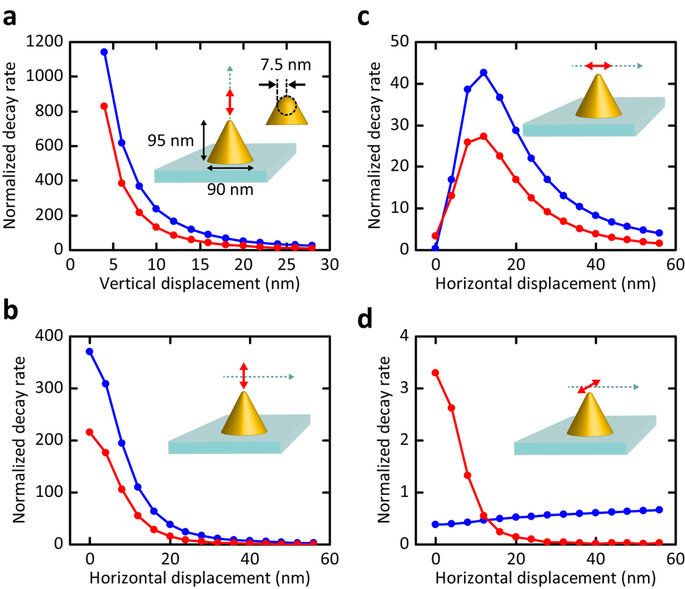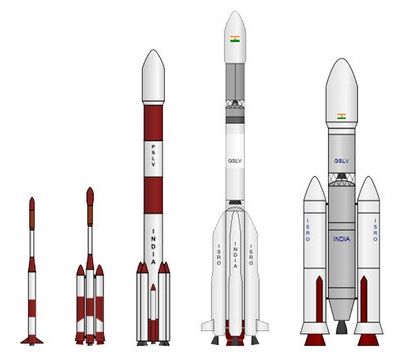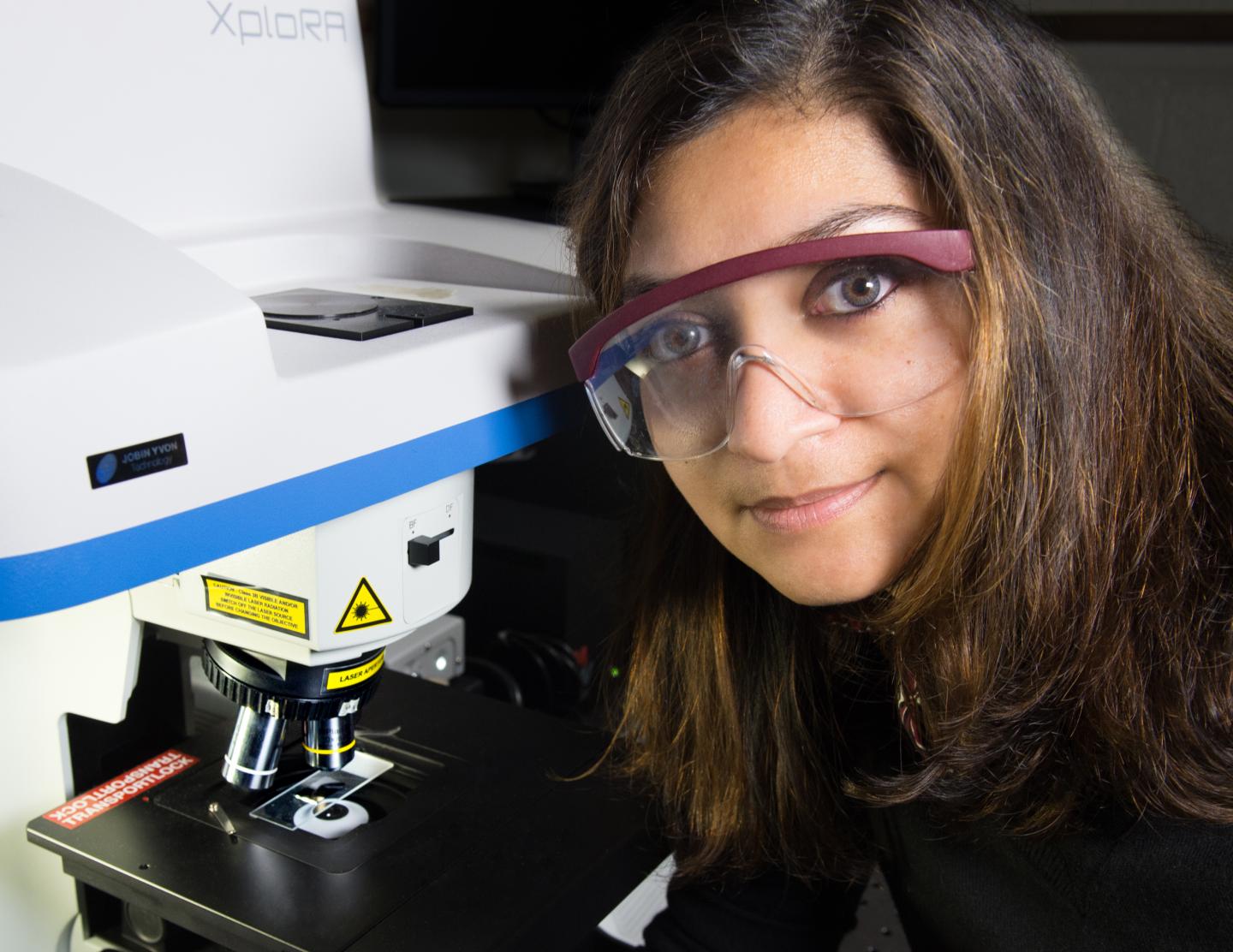Energy-efficient, deep-learning processors are what’s needed to make smart phones, wearables, and other consumer electronics smarter.
Multiexcitonic transitions and emission of several photons per excitation comprise a very attractive feature of semiconductor quantum dots for optoelectronics applications. However, these higher-order radiative processes are usually quenched in colloidal quantum dots by Auger and other nonradiative decay channels. To increase the multiexcitonic quantum efficiency, several groups have explored plasmonic enhancement, so far with moderate results. By controlled positioning of individual quantum dots in the near field of gold nanocone antennas, we enhance the radiative decay rates of monoexcitons and biexcitons by 109 and 100 folds at quantum efficiencies of 60 and 70%, respectively, in very good agreement with the outcome of numerical calculations. We discuss the implications of our work for future fundamental and applied research in nano-optics.
(CNN) — Forget the US versus Russia. The real space race is taking place in Asia.
India’s space agency will attempt to launch 104 satellites from a single rocket Wednesday — a record feat that, if successful, will cement the country’s space smarts after its successful Mars orbiter mission.
The launch would almost triple the current record of 37 satellites Russia sent into orbit in 2014.
Wish he & a couple of others would join this ranks that others are on which makes way more sense plus benefits the masses tremendously. Musk needs to join others in their work to enhance humans via Quantum Biosystems as this work is already showing signs of success across multiple areas such as anti-aging, disease elimination, intelligence & communications, security, reduction in costs of healthcare & social programs, advancements in new creative innovations in technology & medicine, new industry new growth/ economic expansion, elimination of starvation, etc.
How can humans stay relevant in an age of artificial intelligence? Elon Musk thinks cyborgs are the answer.
The Tesla and SpaceX CEO discussed the need for a “merger of biological intelligence and digital intelligence” during a talk on Monday at the World Government Summit in Dubai, CNBC reported.
One of the main advantages computers have over humans is the speed at which they can send out information, Musk said. While humans are limited by the speed of their typing, a computer can send out information at “a trillion bits per second,” Musk said. As artificial intelligence (AI) becomes more advanced, humans will also need to evolve to remain relevant, he added.
Chinese military technology is reaching “near-parity” with the West, a new report from the London-based think tank IISS has found. Western dominance in advanced military systems can no longer be taken for granted.
China accounted for a third of Asia’s military spending in 2016 and was looking to sell more arms abroad, the International Institute for Strategic Studies (IISS) said in a report on Tuesday.
China’s overall defense budget last year was $145 billion (137 billion euros), 1.8 times higher than South Korea and Japan combined. China’s spending was topped only by the United States which spent $604.5 billion (572 billion euros) on defense in 2016.
A NASA technologist has teamed with the inventor of a new nanotechnology that could transform the way space scientists build spectrometers, the all-important device used by virtually all scientific disciplines to measure the properties of light emanating from astronomical objects, including Earth itself.
Mahmooda Sultana, a research engineer at NASA’s Goddard Space Flight Center in Greenbelt, Maryland, now is collaborating with Moungi Bawendi, a chemistry professor at the Cambridge-based Massachusetts Institute of Technology, or MIT, to develop a prototype imaging spectrometer based on the emerging quantum-dot technology that Bawendi’s group pioneered.
Not shocking to see; wonder how long this fact finally came out; as when you review much of the research and application of blockchaining that it is not hard to figure out that as more and more QC goes online; we would need a way to bridge block chaining environments to QC.
Quantum mechanics have ignited a transformational change in the way we envision the world and utilize technology. Economics is one of the prominent fields throughout which Quantum mechanics can be deployed. Quantum mechanics can be utilized to create a novel class of blockchains. A new paper has just been published exploring the possibilities of building blockchains on the basis of Quantum mechanics. It discusses how Quantum mechanics can be ideally deployed to build a new class of blockchains.
Quantum based blockchains, known as K-Chains, have a group of advantages over classical blockchains including communication of transactions at a Faster-Than-Light (FTL) speed, unlimited capacity of the network and an innovative offline blockchain that needn’t be connected to the internet for transactions to be executed. Extrapolation of these possibilities can lead to the creation of Quantum Turing Machines that rely on the Quantum Blockchain (K-Chain) technology. Real time data and communication protocols that span across distances of “light years” will be possible.









